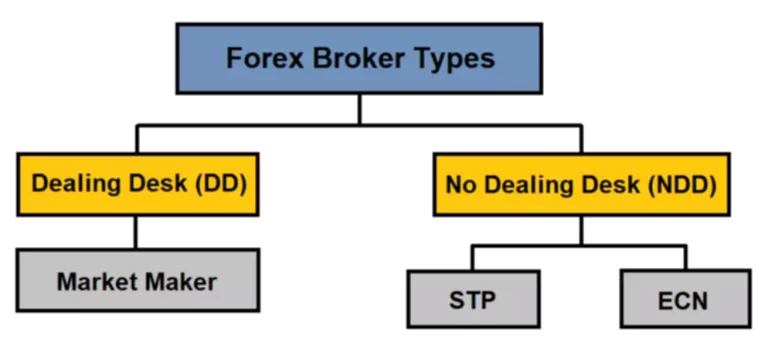What’s An Automatic Market Maker Amm?
In this Automated market maker explained, Uniswap is a pioneering example of integrating DeFi and the AMM model. It makes use of liquidity swimming pools as a substitute of the traditional order guide while utilizing the CPMM equation to adjust price to take care of equilibrium as buying and promoting occur. In this article, we’re going to look at how AMMs work and why they are so popular. Also, we’ll have a look at liquidity providers (LPs), liquidity swimming pools, and impermanent loss!

The longer a liquidity supplier contributes liquidity, the extra reward tokens they earn. And NFT AMMs and virtual AMMs with specialised sensible contracts are already making their presence felt. In all, AMMs are venturing seamlessly into lending, insurance, real-asset, and different spaces. Built on Ethereum, Uniswap is powered by sensible contracts and automates the process of market making. Since 2018, many things have occurred amms models within the AMM house, particularly relating to liquidity provisioning, worth discovery, and handling dangers like impermanent loss. Understanding these key gamers will enlighten traders on the necessity for an automatic system quite than the standard buyer-seller possibility within the DeFi ecosystem.
What Are Automated Market Makers (amms)?
Curve Finance has become a significant a half of the broader DeFi panorama as a outcome of it integrated stablecoin pools. It presents merchants a more secure and fewer volatile collection system achievable by yield farming or lending. The supply and demand of property determine the ratio as buying and selling commences. Beyond the algorithmic execution of trades, AMMs have ushered in using cutting-edge tools and built-in options to reinforce effectivity.
This technique would offset losses that may have amassed as a outcome of impermanent losses, inflicting a value/price stabilization. That means price stability is achieved when traders buy relatively low bids and sell for larger on another platform where the worth appreciates more than the former. Let’s see why AMMs are price it within the decentralized finance space. Although the cloning of protocols is considerably controversial, there are several clones of Uniswap out there on a quantity of blockchains. Each has slightly completely different features and infrequently its own utility token. Both banks and centralized exchanges report their purchase and promote information in a central log (order book) and then offers on that log are matched with one another according to finest fit.
They do this by changing the order guide system (or typically enhancing it) with liquidity pools. You’re likely to read about AMMs lots if you’re learning the ins and outs of DeFi; but what on earth is an automatic market maker anyway? Professional market makers might be more snug with a system like Kyber Network, whereas common crypto users are becoming more comfy with Uniswap and Balancer. Users that are in search of regular rates of interest on their stablecoin holdings can use Curve. In some instances the place there usually are not sufficient counterparties to commerce with, the market is alleged to be illiquid or vulnerable to slippage.
In fact, LPs can find yourself worse off if these fluctuations are drastic and asset costs change substantially. When the prices of belongings deposited to liquidity swimming pools fall and the ratio of the token pairs is unfavorable, there isn’t a method to reverse this. As such, when buying and selling charges don’t offset these losses, they are indeed everlasting. Some decentralized exchanges (DEXs) facilitate trades directly between users and wallets. You can think of most of these trades as peer-to-peer (P2P) transactions between consumers and sellers.
Using Arbitrage For Worth Stability
What if there was a way to democratize this process such that the common particular person could function as a market maker? In order to develop an understanding of the AMM crypto connection, you should know about conventional market makers. The idea of a market maker basically focuses on matching a buyer with a seller. To participate in yield farming, customers just have to add an appropriate steadiness of belongings right into a liquidity pool. After the contribution is confirmed, the AMM, true to its name, will automatically accrue reward tokens, which the liquidity provider can declare on a regular basis.
This ought to lead to decrease fees, less friction, and in the end higher liquidity for every DeFi consumer. AMMs have actually carved out their niche within the DeFi space due to how easy and straightforward they’re to make use of. Decentralizing market making this way is intrinsic to the imaginative and prescient of crypto. Take a deep dive into the burgeoning decentralized financial system. Today, you can “farm for yield” — maximize profits — by moving LP tokens in and out of different DeFi apps. Some of the well-known AMMs embrace Uniswap, SushiSwap, PancakeSwap, and Balancer.

This permits basically anybody to turn into a market maker on an trade and earn fees for providing liquidity. As a result, DEX users can take pleasure in appreciable ranges of autonomy for initiating trades instantly via their non-custodial wallets. Hybrid CFMMs allow extraordinarily low worth impact trades through the use of an exchange price curve that’s largely linear and becomes parabolic only as soon as the liquidity pool is pushed to its limits.
Liquidity Suppliers And Liquidity Swimming Pools
In the most primary sense, an AMM or automated market maker is basically a protocol, an algorithm, or a method that helps in the pricing of property. Rather than using an order e-book mannequin like conventional exchanges, the automated market maker algorithm helps in pricing the assets. Furthermore, you should also observe that the formula for AMMs might differ for each protocol.
Although typically profitable, utilizing automated market makers (AMMs) is inherently dangerous. Always do your own analysis (DYOR) and by no means deposit more than you can afford to lose. Traditionally, market makers assist find the best prices for merchants with the bottom bid-ask spread on centralized order books. The bid-ask unfold is the distinction between the very best value a purchaser desires to pay and the lowest worth a vendor will settle for.
The lending protocols in return allow the idle assets in the liquidity pool to gather an additional curiosity from the lending pools APY rates. Kyber Network has up to three types of liquidity swimming pools that market makers can deploy. The slippage points will range with completely different AMM designs, but it’s undoubtedly something to bear in mind. In a simplified means, it’s determined by how much the ratio between the tokens in the liquidity pool modifications after a commerce. If the ratio modifications by a wide margin, there’s going to be a appreciable amount of slippage. You may consider an automated market maker as a robotic that’s always keen to cite you a worth between two assets.

So in a fundamental sense, AMMs profit all users of DeFi by expanding the array of choices available, whereas remaining true to the target of decentralization. Currently, liquidity providers can earn SNX and REN tokens by providing liquidity to the sBTC pools. The sUSD pool can also be sponsored to earn SNX for providing liquidity. All stablecoin deposits in the Curve swimming pools are put to make use of in Compound, Aave, and dYdX lending protocols.
They do this by utilizing liquidity pools as a alternative for conventional buyer and seller markets. An AMM works like a decentralized exchange powered by sensible contracts and a mathematical formulation used to find out the assets’ price. Simply, an AMM facilitates automated trading by creating or, rather, making a market with excessive token-based liquidity. When liquidity providers (LPs) deposit token pairs into liquidity swimming pools, they generally deposit an equal ratio of every asset. As in the previous example, when providing liquidity to a Uniswap liquidity pool, LPs present an equal ratio of two totally different belongings. But, when you deposit one ETH value $3,000 together with 3,000 USDC, there’s no assure that this ratio will be the same if you withdraw your liquidity.
- Meanwhile, market makers on order book exchanges can control exactly the price factors at which they wish to buy and promote tokens.
- Learn extra about Automated Market Maker or AMM protocols and determine new, efficient approaches for trading your crypto holdings.
- Not only are you able to commerce trustlessly utilizing an AMM, but you may also turn out to be the house by providing liquidity to a liquidity pool.
- In order to develop an understanding of the AMM crypto connection, you need to know about standard market makers.
- In truth, LPs can end up worse off if these fluctuations are drastic and asset costs change substantially.
The process concerned in providing liquidity is what we name market making, and those entities that deliver liquidity are market makers. The automated market maker formula helps in determining to cost. The method showcases the degree of change in the ratio between tokens in a liquidity pool after a selected transaction. In the occasion of a large margin of change in the ratio, you have to worry about unreasonably excessive levels of slippage.
